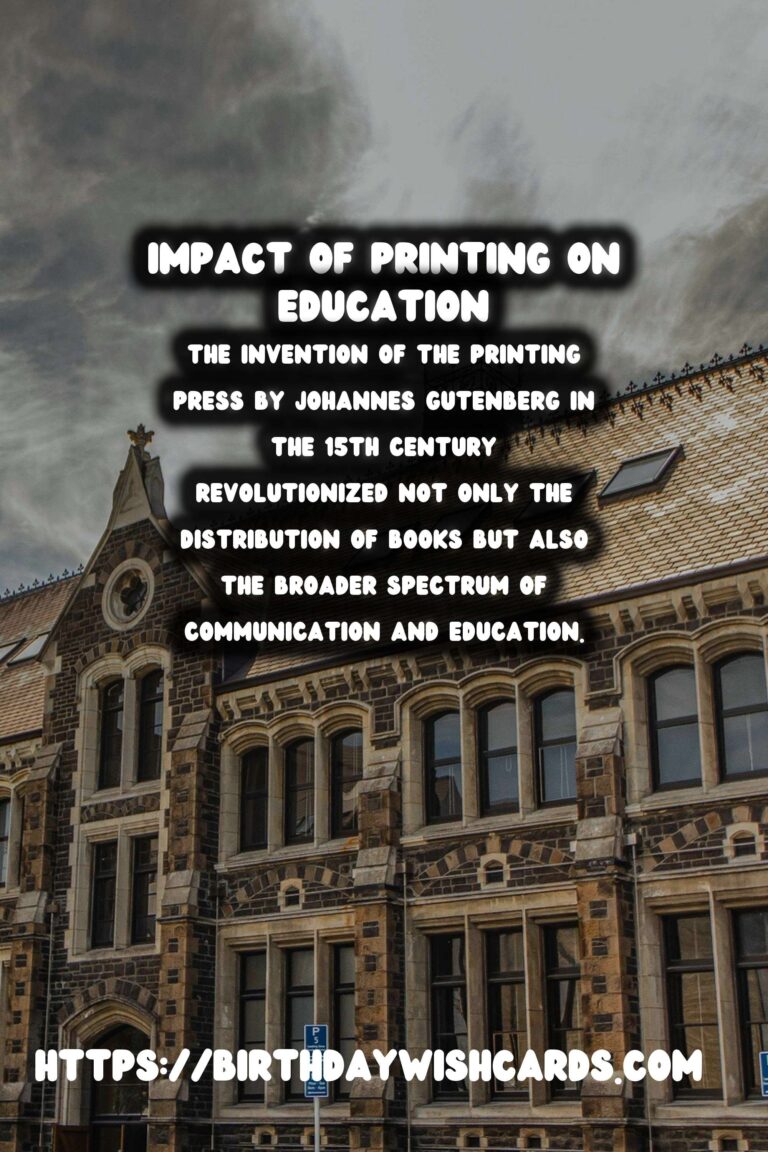
The invention of the printing press by Johannes Gutenberg in the 15th century revolutionized not only the distribution of books but also the broader spectrum of communication and education. Over time, it has continuously impacted the way knowledge is disseminated and consumed around the world.
Early Printing: The Dawn of Mass Communication
Before the advent of printing, books were hand-copied, a painstaking and slow process that made literature accessible only to the elite. With Gutenberg’s press, books could be reproduced quickly and in large numbers, democratizing access to information.
The printing press catalyzed the spread of ideas, supporting movements like the Renaissance and the Reformation. For the first time, scientific ideas and religious texts could reach a wider audience, fostering a culture of inquiry and literacy.
Printing and Education: A Symbiotic Relationship
The impact of printing on education has been profound, enabling the mass production of textbooks and scholarly works. This accessibility meant that more individuals could learn to read and write, and education ceased to be a privilege reserved for the wealthy or clergy.
As literacy rates climbed, so did the demand for books, leading to the establishment of schools and libraries that became central to community life. Educators could rely on printed texts to ensure that knowledge was standardized and consistently transmitted across generations.
The Role of Printing in Modern Education
In contemporary times, printing continues to play a crucial role despite the rise of digital media. Educational materials, from textbooks to scholarly journals, are still predominantly printed, providing an essential resource for students and educators. Print ensures that learning can occur without the hindrance of electronic glitches or access issues that digital formats might encounter.
The integration of printed materials with digital resources has also seen an enhancement in curriculum design, blending traditional learning methods with modern technology to create more dynamic and engaging educational experiences.
The Future of Printing in Education
Though the digital revolution presents new opportunities for learning, printing remains a steadfast part of the educational landscape. Its continued evolution will likely involve the integration of smart technologies, ensuring that printed materials remain relevant in an increasingly digital world. The tactile nature of printed materials complements digital screens, offering a balanced approach to education.
In summary, the history of printing is deeply intertwined with the progress of education. It has paved the way for a more informed and literate society, expanding knowledge far and wide beyond the limitations of geography and social status. As printing continues to adapt, its impact on education is bound to endure, empowering future generations to explore and learn.
The invention of the printing press by Johannes Gutenberg in the 15th century revolutionized not only the distribution of books but also the broader spectrum of communication and education. Its continuous impact on education ensures that printed materials remain relevant in an increasingly digital world.
#PrintingHistory #Education

